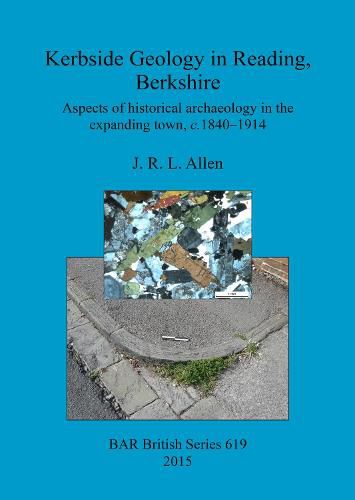Readings Newsletter
Become a Readings Member to make your shopping experience even easier.
Sign in or sign up for free!
You’re not far away from qualifying for FREE standard shipping within Australia
You’ve qualified for FREE standard shipping within Australia
The cart is loading…






This title is printed to order. This book may have been self-published. If so, we cannot guarantee the quality of the content. In the main most books will have gone through the editing process however some may not. We therefore suggest that you be aware of this before ordering this book. If in doubt check either the author or publisher’s details as we are unable to accept any returns unless they are faulty. Please contact us if you have any questions.
Between 1801 and the First World War the population of the Borough of Reading increased almost tenfold, simultaneously with the growth of new industries. The authorities responded by delineating new streets and encouraging development in districts springing up mainly to the east, south and west beyond the original market town. The Borough’s Highways Committee, helped by legislation, played a major role in managing and guiding these activities, especially in the later part of the nineteenth century. Large number of bricks burnt from local clays were used to build houses, shops, schools, chapels and churches required in these new suburbs, but the making of the streets called for the procurement of stone from far and wide. This volume discusses the geological features, spatial distribution and geographic sources (such as south Oxfordshire, Wales, Leicestershire and as far away as Norway) of the types of stone used for road construction in Reading in the late nineteenth and early twentieth centuries.
$9.00 standard shipping within Australia
FREE standard shipping within Australia for orders over $100.00
Express & International shipping calculated at checkout
This title is printed to order. This book may have been self-published. If so, we cannot guarantee the quality of the content. In the main most books will have gone through the editing process however some may not. We therefore suggest that you be aware of this before ordering this book. If in doubt check either the author or publisher’s details as we are unable to accept any returns unless they are faulty. Please contact us if you have any questions.
Between 1801 and the First World War the population of the Borough of Reading increased almost tenfold, simultaneously with the growth of new industries. The authorities responded by delineating new streets and encouraging development in districts springing up mainly to the east, south and west beyond the original market town. The Borough’s Highways Committee, helped by legislation, played a major role in managing and guiding these activities, especially in the later part of the nineteenth century. Large number of bricks burnt from local clays were used to build houses, shops, schools, chapels and churches required in these new suburbs, but the making of the streets called for the procurement of stone from far and wide. This volume discusses the geological features, spatial distribution and geographic sources (such as south Oxfordshire, Wales, Leicestershire and as far away as Norway) of the types of stone used for road construction in Reading in the late nineteenth and early twentieth centuries.